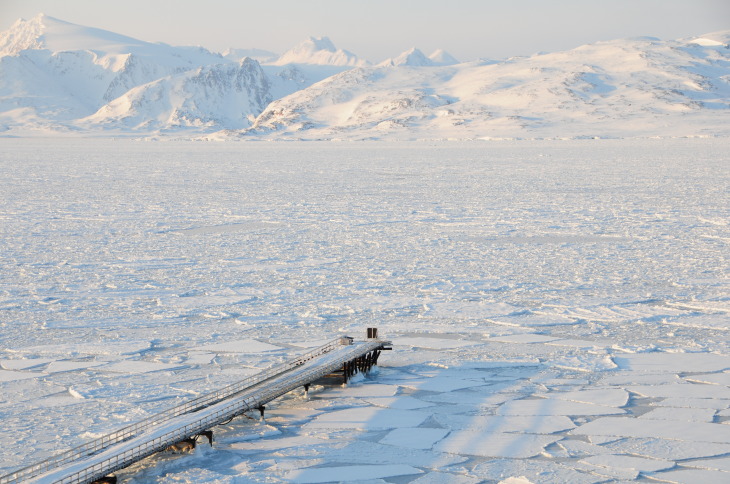Arctic Coasts

In the Arctic, the influence of a changing climate is already visible: the sea ice cover, for instance, has been shrinking during the last decades. Major anticipated consequences include: a largely ice-free Arctic Ocean in the summer or higher erosion of permafrost cliffs due to increased wave activity. Higher concentrations of nutrients as well as dissolved and particulate matter will change the productivity of phytoplankton in coastal waters. In addition, emissions of the greenhouse gas methane from the thawing permafrost could influence the global climate.
At Spitsbergen, COSYNA is using methods that have been developed and proved in the North Sea. Automated measurement stations, such as underwater nodes and stationary FerryBoxes are used to measure turbidity, oxygen, CDOM, and methane, as well as temperature, salinity, and pH. Such automated systems allow measurements in harsh environmental conditions year-round that are otherwise almost impossible and very expensive to carry out.
